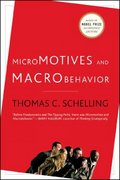Question
Two distinct proposals, A and B, are being debated in Washington, DC. The Congress likes proposal A, and the President likes proposal B. The proposals
Two distinct proposals, A and B, are being debated in Washington, DC. The Congress likes proposal A, and the President likes proposal B. The proposals are not mutually exclusive; either or both or neither may become law. Thus, there are four possible outcomes and the rankings of the two sides are as follows, where a larger number represents a more favored outcome.
(a) The moves in the game are as follows. First, Congress decides whether to pass a bill and whether it is to contain A or B or both. Then the President decides whether to sign or veto the bill Congress does not have enough votes to override a veto. Draw a tree for this game that is, depict the game in extensive form and find the equilibrium using backward induction (or rollback). (b) Now suppose the rules of the game are changed in only one respect: the President is given the extra power of a line-item veto. This means that if the Congress passes a bill containing both A and B, the President may choose not only to sign or veto the bill as a whole, but also to veto just one of the two items. Show the new game tree for this version and find the equilibrium using backward induction (rollback) (c) Explain intuitively why the difference between the two equilibria arises.
| Outcome | Congress | President |
| A becomes law B becomes law Both A and B become law Neither status quo prevails | 4 1 3 2 | 1 4 3 2 |
Step by Step Solution
There are 3 Steps involved in it
Step: 1

Get Instant Access to Expert-Tailored Solutions
See step-by-step solutions with expert insights and AI powered tools for academic success
Step: 2

Step: 3

Ace Your Homework with AI
Get the answers you need in no time with our AI-driven, step-by-step assistance
Get Started


